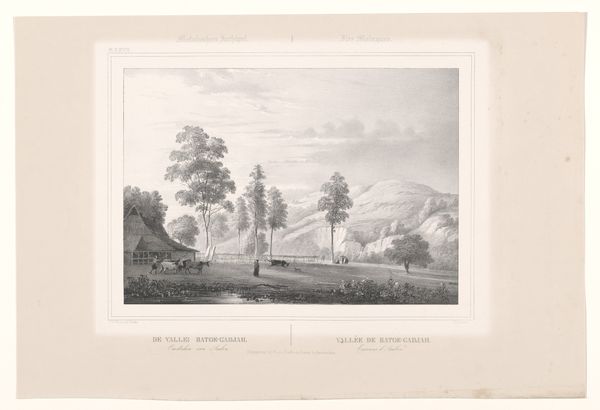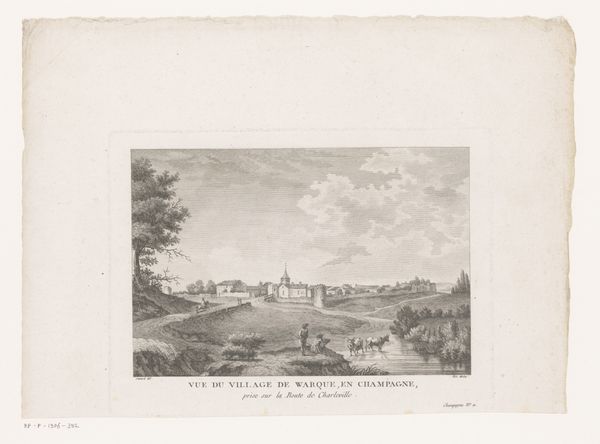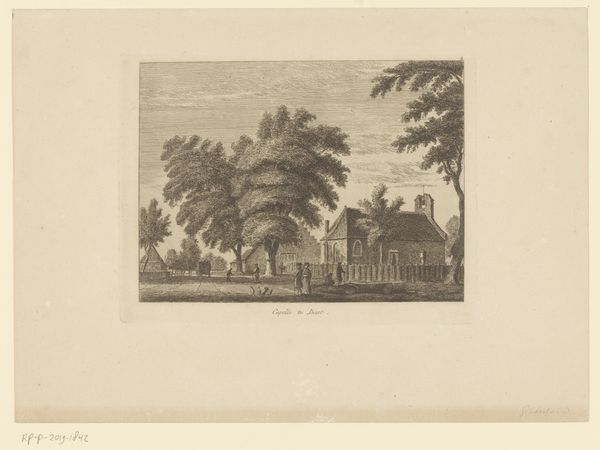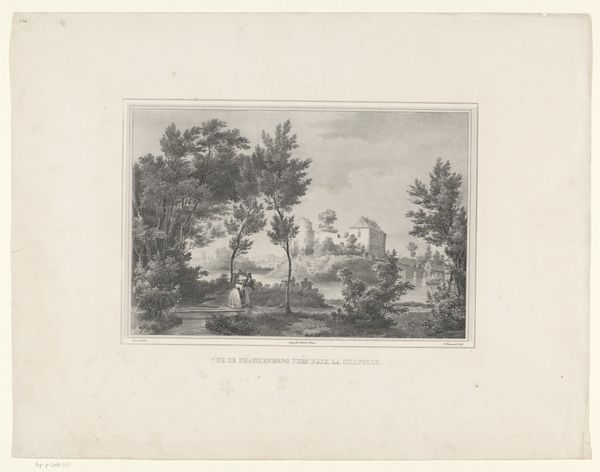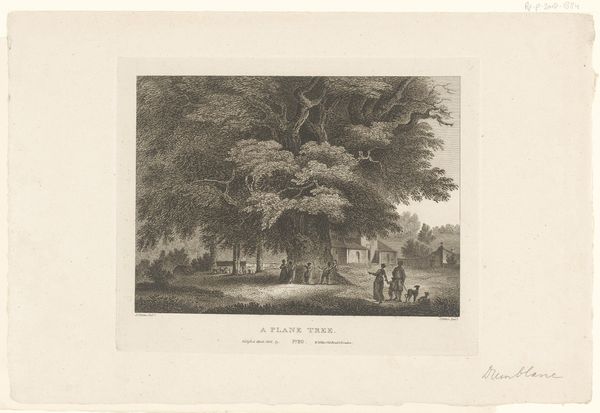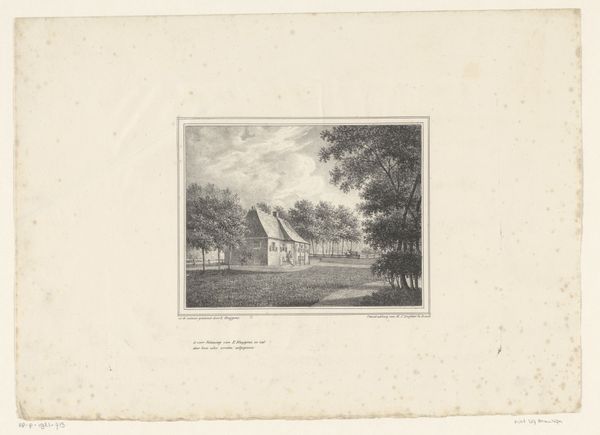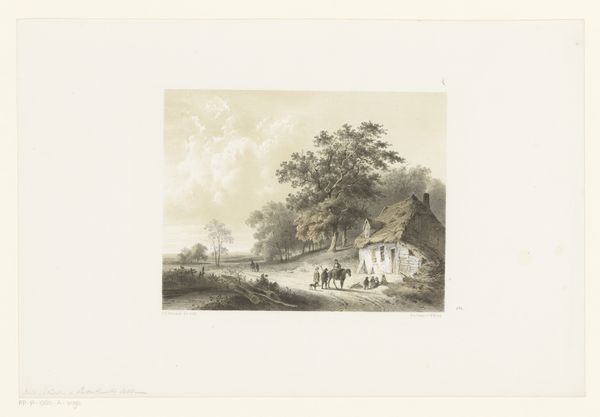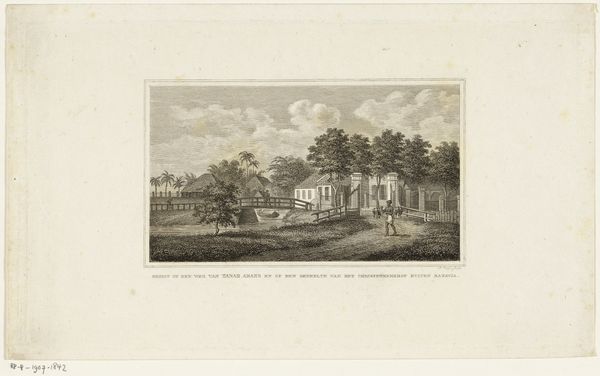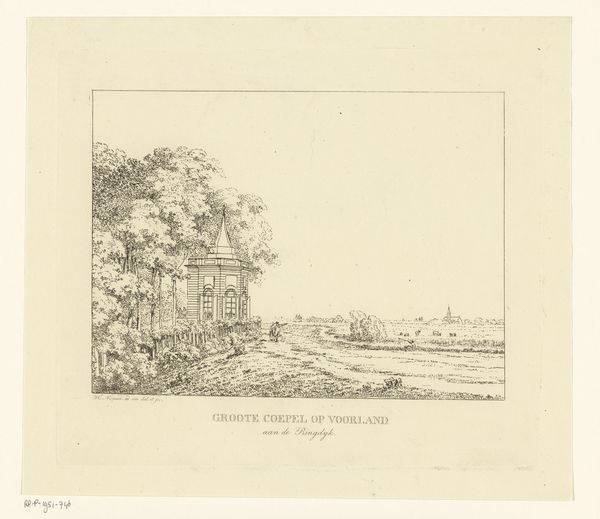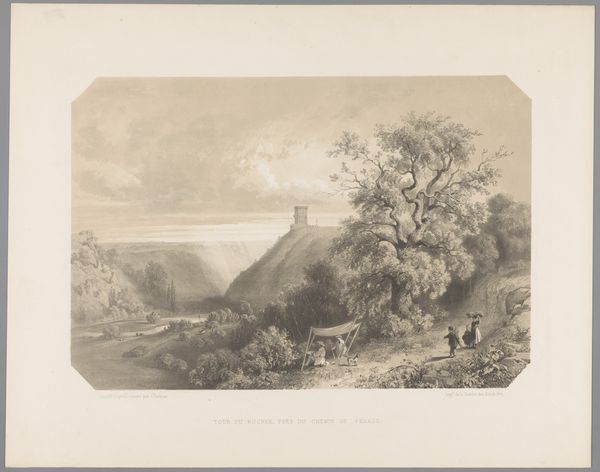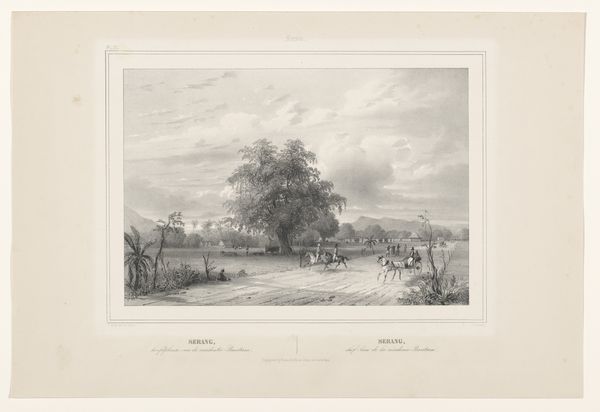
tempera, print, architecture
#
tempera
# print
#
landscape
#
orientalism
#
architecture
Dimensions: height 345 mm, width 510 mm
Copyright: Rijks Museum: Open Domain
Curator: Let’s turn our attention to “Gezicht op een tempel bij Bantam” or “View of a Temple near Bantam,” a print by Paulus Lauters from around 1843 to 1845. It's currently held at the Rijksmuseum. Editor: My first thought? Peaceful, almost dreamlike. It's like peering into a serene, forgotten world, muted and grayscale, the soft gradations giving it such a tranquil feel. And that central structure—imposing yet graceful. Curator: It's a prime example of Orientalism in art. These prints often romanticized and sometimes exoticized Eastern landscapes, creating a sense of the 'other' for European audiences. The way the temple dominates the scene... Editor: Right, but what's intriguing is how the perspective invites us to be both observers and intruders. That little figure walking on the path almost grounds it. Makes you wonder what his life is like. And I keep getting drawn back to the cloudy sky— it’s as expressive as the architecture! Curator: These types of images played a critical role in shaping European perceptions of Southeast Asia. The architecture becomes a symbol not just of the place itself, but also a whole world of assumed exoticism and mystery. Look how different it might appear if done as pure architectural illustration, as opposed to a landscape painting Editor: Agreed. It’s more than just a visual record, it's about feeling, mood, and yeah, even maybe the beginning of manufactured stories about what life is like far away. What's interesting is that in real life, what did that sky feel like? What would be its colors? The muted style can add another level to this distance that it evokes. Curator: Considering the period, this image likely circulated widely, further cementing particular ideas. Think of how impactful these prints could be to people who’d never see these locations firsthand. Editor: Definitely changes my viewing knowing all this—it feels less like a simple picture now and more like a carefully packaged idea. I find my mind starting to think and ponder what is real about this and what is embellished, how well and truly the artist captured that temple! It almost becomes surreal! Curator: It reminds us how art doesn't just reflect the world but actively constructs our understanding of it, historically, socially and even now. Editor: True. Makes you want to dig deeper, find out more about that specific temple and, if it’s still standing. Look at what images do.
Comments
No comments
Be the first to comment and join the conversation on the ultimate creative platform.
